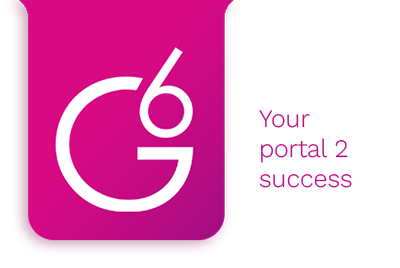Picture this: you’ve connected with a possible lead and had an entire conversation, but closing the deal takes forever.
Does your company have longer sales cycles than you want? Don’t worry; several small businesses suffer from the same frustration because they don’t have a lead qualification system!
Hi! My name is AJ! I recently sold my business for multiple seven figures. I started Small Business Bonfire to help aspiring entrepreneurs achieve their dreams.
Running a business for several years helped me realize the importance of qualifying leads accurately and efficiently.
So, if you’re ready to take your business to new heights and qualify leads correctly, keep reading!
Key Takeaways
BANT stands for budget, authority, need, and timeline.
BANT makes it easier for teams to determine the best sales leads.
Asking prospects the right questions leads to deeper relationships.
If your products or services can solve a customer’s pain points, they are likelier to purchase.
Related Reading: Best CRM for Small Businesses
SBB Featured Partners
BANT is a way for sales teams to determine whether a prospect is a good fit for the company’s sales process.
The sales qualification technique takes the following things about a prospect into consideration:
BudgetInternal influenceAbility to buy your products or servicesNeed for the product or servicePurchase timeline
BANT allows companies and sales reps to learn the most integral prospect information upfront.
That way, teams spend most of their time on qualifying leads, not people who don’t have the need or budget for your products or services.
BANT is an acronym that stands for “budget, authority, need, and timeline.”
If the term “BANT” is new, you’re likely curious about what these points mean.
Let’s take a look!
The “B” in BANT stands for budget.
This aspect of the acronym asks the question: How much will the prospect be able to spend on our products or services?
Sales reps need to determine whether a lead has the money to purchase what your company offers.
Otherwise, they are chasing a dead lead that doesn’t help your sales process in any way.
Determining the prospect’s budget ensures you guide them toward the best-fitting products or services.
“Authority” asks the following questions about the prospect:
Who is considered the authority figure in this sale?Who decides on the types of products or services they buy?
Sales reps must determine who the decision-maker is in order to move forward with a lead.
For instance, what good is pitching to a lower-tiered employee who doesn’t have the authority to make a purchase for the company?
The “N” in BANT stands for need.
Need asks the following questions about the prospect:
Does the prospect need our products or services?Can our products or services solve a pain point for this customer?
Prospects with a higher need are better for your sales pipeline, as they will purchase things faster.
Still, if the lead qualification process indicates a prospect’s need is in the middle tier, there are specific strategies you can use to entice them to purchase things!
The final aspect of BANT considers the prospect’s timeline.
How much time will the lead require to buy your products or services?
If the lead needs something quickly, it’s essential for your sales team to deliver a fast response.
On the other hand, some prospects may not need your products or services for months.
Therefore, sales reps must determine the prospect’s timeline from the beginning of the qualification process.
BANT is a lead qualification strategy that is highly beneficial for several businesses!
Some of these benefits include the following:
It’s an efficient sales qualification frameworkLead qualification is more accurateSales reps work together betterIt’s easier to train a new sales rep with BANT in place
Let’s look at each of these advantages in closer depth!
BANT is a tried-and-true method of sales qualification framework, having been implemented successfully by countless businesses over the years.
BANT was initially created in the 1950s by IBM.
The fact that the BANT sales framework is still in effect today speaks to its effectiveness!
The systematic approach of BANT leaves little room for ambiguity, ensuring that sales reps can efficiently identify the most promising leads.
Further, BANT is a repeatable process that consistently yields reliable results, allowing for predictive sales forecasts and strategic planning.
In essence, the time-tested nature of BANT provides credibility and assurance that newer or less standardized qualification methodologies may need to improve.
Another benefit of using BANT is that it acts as a systematic lead qualification technique.
Why is it essential to have a system to qualify prospects?
Systems ensure everything within your sales cycle moves smoothly.
Also, when you qualify prospects systemically, it ensures everyone on your team follows the same steps.
As a result, your company enjoys the following things:
Employees enter data the same wayThere are fewer errors when determining leadsYou shorten the sales cycleYour team can qualify leads fasterSales agents feel more confident in their abilities
Creating a system for the purchasing process is highly beneficial for everyone, from your qualified leads to your employees!
BANT also fosters team communication, which can significantly enhance performance and productivity.
With a clear, shared framework like BANT, sales reps can easily communicate and collaborate regarding prospect details.
They can discuss and understand everything a prospect needs, eliminating confusion or misinterpretation.
This shared understanding enables the team to work cohesively towards goals, reducing time spent on redundant or unproductive tasks.
Further, BANT facilitates a seamless lead transfer between team members when required, ensuring no opportunity is lost.
Put simply, BANT is a common language that does the following things:
Unites the teamStreamlines processesBoosts overall sales efficiency
Lastly, BANT simplifies sales rep training (what more could you ask for?).
Training new employees about your company’s unique sales process can get time-consuming and expensive.
However, when you have a standardized process, training takes less time!
Also, when your company has a strong lead qualification framework to rely on, experienced employees can help train new hires.
One of the primary benefits of implementing BANT is more manageable employee training because it saves significant time and money!
Now you understand how beneficial BANT can be for your company’s sales process.
But how do you use BANT? What are the ins and outs of this strategy?
Here are five steps to successful BANT implementation!
The first step is understanding your prospect’s budget beyond the dollar amount.
Sales reps must ask for the prospect’s expected ROI (return on investment).
If their ROI aligns with your pricing, there’s good reason to qualify the prospect on budget.
Learning about a lead’s budget is essential for your sales and marketing teams to pitch the proper content if your company offers different pricing tiers.
The second step of BANT is to identify stakeholders or decision-makers.
Your sales team should ask the prospect who will participate in their decision-making process.
Typically, there are two individuals: one with the budget and authority and another who can influence the decision.
Create a list of everyone who will be involved in the decision-making process, along with the following details:
Job titlesDetermining whether they’re a decision maker or notPrioritiesThe best way to contact them during the decision process
The more contacts you have during this step, the better!
More contacts means a higher chance this opportunity will turn into a conversion!
The third step of BANT is to identify the pain and need for your products or services.
Your sales reps should ask what problems or pain points the prospect is experiencing and how you can help them solve them with your products or services.
It’s also essential to create a timeline for qualifying prospects.
The timeline tells your team when the lead wants their issues solved and whether your business’s solutions fit that timeline.
If you do not have a solution that fits their needs, it’s best to disqualify the lead and move on to the next prospect.
The fourth step of BANT is to understand the lead’s timeline.
Your team should determine how quickly your prospects need a solution and whether they will wait.
For instance, if a lead requires something right away, you may not have the resources available, and it would be wise to disqualify them from the BANT qualification process.
On the other hand, if your team can deliver quickly on their timeline, you have a higher chance of converting them into paying customers!
Ensure the initial sales call or touch point learns about the customer’s timeline.
That way, you can follow the best path in your sales cycle.
The fifth and final step of BANT is a bonus tip!
After you’ve identified the budget, decision makers, need, and timeline, tracking the progress of qualifying prospects throughout the sales process is essential.
By tracking your team’s progress throughout the sales process, you will better understand what works and what doesn’t with your target customers.
Nurturing prospects after you’ve gone through the BANT qualification process is also essential.
One way to do this is by sending regular emails, content, and offers related to the prospect’s needs and pain points!
BANT criteria is more than just a checklist.
Instead, this tested strategy ensures your company discovers the best leads while building a meaningful relationship with them.
The key to making this system work for you is asking BANT lead qualification questions.
Below, I’ve compiled the best questions to help your reps determine who’s best qualified to buy your products or services!
Let’s take a look!
We’ll start with some budget-focused questions you can ask your prospects.
These questions help your sales agents determine if leads will convert to sales conversions.
This question lets you learn what products or services would be a good fit for this lead.
Also, it ensures you’re going after consumers who can afford what your company offers.
With this question, you’re determining whether the company has already bought your products or services (or something similar).
If they haven’t purchased things from your company, you must convince them that your company is superior to competitors!
This question is great for learning about the company’s budget and potential financial constraints.
Knowing this can help you adjust your sales call and pricing accordingly!
This question helps you determine the company’s timeline and whether or not you’re talking to a decision-maker.
Your team needs to know if there isn’t an immediate budget set so they can focus on other prospects while the client determines their budget.
Here, you determine how set in stone a company’s budget is.
Also, you can see whether the price factor is actually that big of a deal for your customers.
This question ensures you know any budget restrictions and expectations from the prospects.
It also tells your team whether separate funds are allocated for implementation and support so your reps know what to pitch!
Below, I’ve compiled some questions regarding the authority aspect of the BANT framework.
Let’s take a look.
This question helps you understand who’s in charge of purchasing decisions.
Also, this information ensures you talk to the right person when there are budget changes, add-ons, etc.
This question allows you to learn about the company’s decision-making process.
For instance, you can determine who needs to approve investments and how long it takes to make decisions.
Here, you’re determining whether there will be a price obstacle for the prospect’s organization.
Also, this question emphasizes that your company’s products or services are beneficial because they’re solving problems!
This question helps you learn if the budget is flexible depending on the value proposed by your solution.
It can also help you determine whether a customer will buy from you, especially if they understand how much of an improvement and return on investment your company’s products or services can bring!
Remember: different buyer personas may be willing to spend more if it means earning more in the long run.
This question is vital to help buyers understand the repercussions of not buying your products or services.
It also lets you emphasize the importance of taking action and purchasing from your company!
This question is excellent because it determines whether the prospect is thinking long-term.
Additionally, this question shows that your company can continuously offer products and services that benefit their organization.
This data also ensures you reach out to these customers down the road and inquire about further services or products.
These questions help determine if a lead needs your products or services to solve a problem they’re experiencing.
Qualification questions are essential to the decision criteria for qualifying leads.
Let’s take a look.
Here, you immediately determine if your product or service will benefit the customer.
This question also ensures the prospect understands what your company offers.
This question allows you to quantify the issue within the customer’s work environment.
It also helps determine how big of an impact this problem has on their operations so you can adjust your sales call and pitch accordingly!
This question ensures your team doesn’t offer something the prospect has already tried.
So, instead of wasting time with one product, you already understand that you must offer something else to make the potential customer happy!
This question is great for understanding the customer’s needs and how your product or service can help.
It also allows prospects to describe what they’re looking for so you can provide a tailored product that meets their needs!
This question determines how quickly the lead wants to make a purchase.
It’s crucial not to push the buying process on customers who aren’t ready.
Here, you’re subtly finding more sales opportunities immediately or in the future.
This question helps you understand the lead’s organization and how your products or services can benefit various departments or functionalities.
The timeline-focused questions ensure you don’t rush a prospect through your sales process.
Understanding the lead’s timeline also ensures you allocate your team’s resources, time, and money to the correct spots.
This question allows you to gauge how fast a customer wants to make a purchase.
And if a customer needs more time, you can focus more on upcoming sales.
This question lets you understand if you must know about any time restrictions.
It also helps you prioritize leads and promptly guide prospects through the sales process!
Understanding a project’s start date ensures your company can offer the proper time, resources, and attention.
This is an important question, as certain times of the year may be too busy for prospects to consider purchasing.
It also allows you to plan ahead and adjust your outreach accordingly!
This question allows you to understand how crucial the timeline the prospect offers is.
For instance, some companies may need a product in two weeks to meet customer demands.
In other cases, organizations aren’t rushing to complete the project.
The data your company gets from the above question helps you secure future deals and understand if the organization is interested in expansion!
Consider these two alternatives if the BANT framework isn’t suitable for your business.
FAINT stands for:
FundsAuthorityInterestNeedTraining
FAINT is very similar to BANT, except it goes into more detail.
Two distinctions between FAINT and BANT include the following:
FAINT considers funds over budget (even if the customer doesn’t have the allotted budget, they can still buy the product or service on a payment schedule)FAINT considers interest and need
The ANUM framework is a customer-centric approach that helps sales agents find opportunities.
ANUM stands for:
AuthorityNeedUrgencyMoney
With this framework, automating your qualification process with tools like chatbots is easier.
An effective BANT strategy can be a game changer for your business!
With this technique, your sales agents can determine the prospects most likely to purchase your products or services.
As a result, your company saves a TON of money because your team isn’t wasting time chasing dead leads.
Does your company have a BANT process in place? Let us know in the comments section!
Good luck implementing this time-tested technique into your business operations! I know it will make a positive impact!
The post What is BANT? A Guide for SMB Sales appeared first on Small Business Bonfire.
—
Blog powered by G6
Disclaimer! A guest author has made this post. G6 has not checked the post. its content and attachments and under no circumstances will G6 be held responsible or liable in any way for any claims, damages, losses, expenses, costs or liabilities whatsoever (including, without limitation, any direct or indirect damages for loss of profits, business interruption or loss of information) resulting or arising directly or indirectly from your use of or inability to use this website or any websites linked to it, or from your reliance on the information and material on this website, even if the G6 has been advised of the possibility of such damages in advance.
For any inquiries, please contact [email protected]




